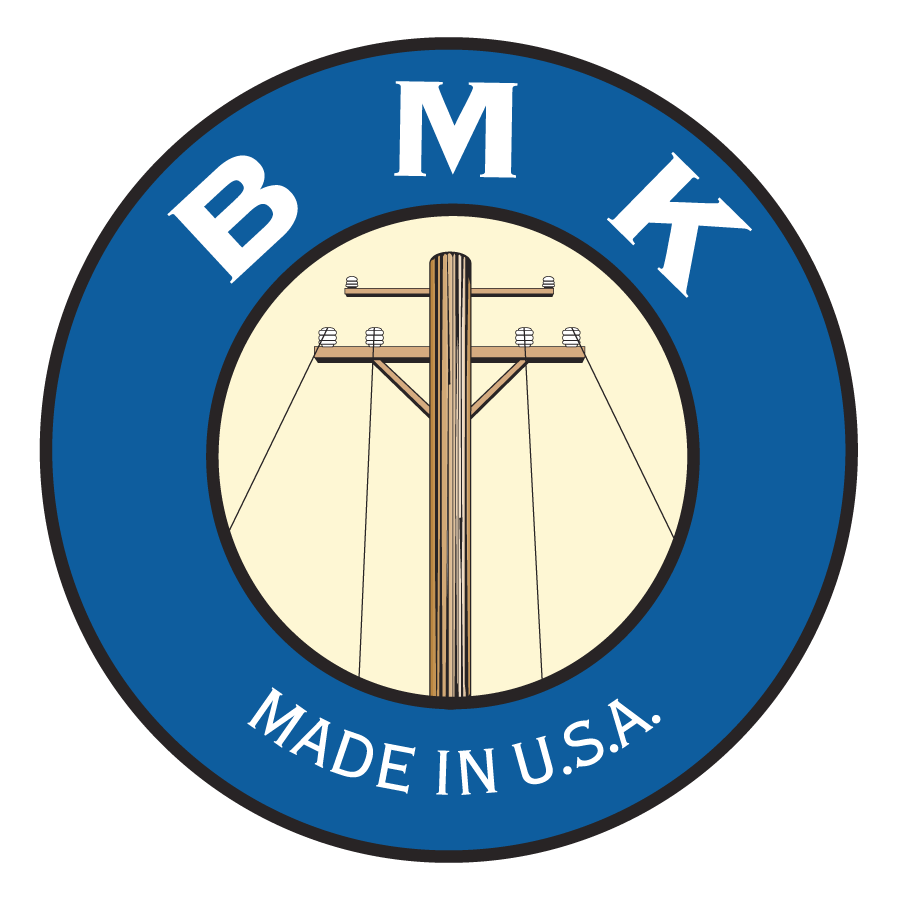Closed and unopened containers of Polecrete® and Postloc® components should be stored out of direct sunlight at 50°-95°F (10°-35°C). RSP™ and Padcrete™ can be stored at temperatures up to 105°F (40°C).
Temperature and Weather Effects
What are the safe storage requirements, and acceptable storage temperature ranges, for BMK products?
What is the normal shelf life of BMK products?
Shelf life varies between products. RSP™ and Padcrete™ can be safely stored for twelve (12) months before use, while unopened Postloc® and Polecrete® components have a twenty-four (24)-month shelf life. Postloc® and Polecrete® components remain usable, so long as they are stored under recommended conditions and proper care is taken to agitate the ISO (A) and Polyol (B) components before mixing, if the product has been stored for an extended period of time. All BMK products should be kept tightly sealed, as they are moisture-sensitive.
Must BMK products be kept in a warm environment before use in the field, such as in the cab of a truck?
For best results, we recommend that all our products are kept within the recommended storage temperature range.
Can BMK products be used in outside temperatures below -20°C (0°F)?
Yes. However, for best results, kits should be kept at 70°F (20°C) prior to use. In addition, holes should be augured at the same time the product will be used.
Does cold weather adversely affect performance of BMK products?
No. Following the initial product cure, outside temperatures do not affect performance.
Will the properties of BMK products change significantly from 40°C (100°F) to -50°C (-58°F)?
In rigid form, no, but in liquid form, yes. For optimal results, we recommend that foam should be kept at 70°F (20°C) or above before use.
What is the setting/curing time of BMK products until they are 100% cured?
15 minutes at 70°F (20°C). Colder temperatures can lengthen curing times.
How susceptible are BMK products to the effects of freezing and thawing?
Freezing and thawing has no effect on the cured foam.
Does freezing affect Polecrete Stabilizer chemical Quality?
Testing has confirmed that there was no change in the properties of the chemicals after being frozen. Color, appearance, reactivity and density were not affected when subjected to below freezing temperatures for a 2 week period.
Health and Safety
Is an MSDS (Material Safety Data Sheet) available for BMK products?
Yes. Both a Technical Data Sheet and a Safety Data Sheet for all BMK products are available for download. They can be found on the Product Downloads/Documents page, as well as on each individual product page.
What is the recommended PPE to be worn while using BMK products?
We ask that users wear eyewear that conforms to the ANSI Z87.1 D3 standard, as well as chemical-resistant gloves, when using BMK products. A pair of gloves is included in each BMK product package. Face masks or respirators are not required but certainly recommended.
Are there any chemical byproducts or vapors produced when BMK foam products are mixed and installed?
No. BMK foam products release carbon dioxide (CO2) when mixed.
Are there specific procedures to follow when handling BMK products?
Yes. Instructions are provided with each kit. We also have a number of how-to videos available on our site in the Resource Center. BMK representatives can also provide an in-person demo to your crew at no additional charge.
Is there any safety requirements needed to remove BMK foam products?
Yes. Do not burn the cured foam.
Are BMK products flammable? How will they stand up to grassfires or lightning strikes? Do they need to be grounded?
Please refer to the individual Technical Data Sheets and Safety Data Sheets for each BMK product. Those are available for download here.
Environmental
What environmental standards do BMK products meet?
All BMK products are classified as non-hazardous by the United States Environmental Protection Agency (EPA) and Department of Transportation (DOT). They have also been confirmed as having zero Ozone Depletion Potential (ODP) and Global Warming Potential (GWP).
Can BMK products be safely used in bodies of water like sloughs or wetlands, or contained within a culvert for example?
While most closed-cell urethanes typically float in water, BMK foam products have been used successfully in marshy environments. Once set, our foam’s performance is typically much better in these environments when compared to concrete or other tamping/holding materials.
Is there any danger to wildlife, plants, or water species before or after BMK products are cured?
In liquid form, BMK foam products should not be consumed. After the foam has cured, it is not digestible and does not break down.
What is the disposal procedure for cured BMK products when they need to be removed? Are they landfille acceptable?
Yes. Cured urethane foam is legally acceptable to be disposed of in landfills.
Can previously-cured foundation be left in place should a pole failure occur?
Yes. However, typically when a pole is removed from the ground, the urethane will come out of the ground with it. This is a testament to the holding strength of BMK foam products.
What is the disposal procedure for the A and B component containers? Are they readily acceptable in landfills?
Yes. Empty plastic containers can be recycled or placed in landfills.
Chemical
What are the chemical properties of BMK foam products, and have there been any studies on the impacts they have on the longevity of wooden poles?
Rigid, properly mixed urethane foam is totally inert. Liquid urethane seals the pores of a wooden pole, which not only preserves the pole but also keeps wood treatments and preservatives from leaching into the soil.
Mechanical
What are the loading limits for a typical wooden pole installation?
80 pounds-per-square-inch (PSI) is the limit.
Will the foam permanently deform once exposed to sustained loading?
Yes, over and above the aforementioned limit of 80 psi.
Operation/Maintenance Concerns
Is there a maximum pole setting depth? What is the recommended depth of excavation to install BMK foam products?
Standard electric utility constraints should be followed. The usual equation for this is depth setting= 10% of pole length + 2 feet.
Is there a recommended equation between a utility pole's class/length and the hole's size/depth?
Yes. All standard electric utility constraints should be followed.
If the top 2 feet of the hole is backfilled with natural soil, should the pole be buried deeper?
No. Standard electric utility constraints should be followed. BMK foam products, after they expand and cure, will occupy the excavation space. This reduces or eliminates the amount of soil needed to be used as backfill.
If the pole is damaged (e.g. from a lightning strike), how do we remove the pole and clean the foam from the foundation?
Place an auger next to the pole and auger down greater than half-way the original buried length. Then, pull the pole into the augured slot.
What is the life expectation of BMK foam products?
We do not have a definitive answer, but suspect it is forever. BMK Products has been in existence since 1988, and we know that foam used in installations from that time has lasted until the present day.
Are there any UV inhibitors in BMK products?
No. BMK products have the same bonding properties no matter the material used.
Moisture Concerns
If the bottom of the utility pole might be left under water after installation (i.e. installers could not pump 100% of water out), are there any other recommendations for installation?
Yes. Use crushed limestone to dissipate the water, or fill with limestone up to the water level, before filling with Polecrete or another BMK foam product.
A new wooden pole will likely experience shrinkage after installation. Will the foam trap water in between foam and pole?
No. BMK foam forms a permanent bond directly to the pole, which keeps water out and also typically prevents shrinkage.
After years of service under the effect of wind and conductor loading, will gaps appear between pole and foam? If so, can water get trapped in that gap and create an accelerated decay environment?
No. The foam forms a permanent bond directly to the pole, keeping water out.
A pole's surface and soil from excavation may be moist when it is removed from the ground. Will this decrease the foam's ability to encase the pole firmly?
No. The condition of the soil or pole does not affect the bonding of the foam to the pole.
Does the standard Polecrete enhance or detract from the grounding characteristics of wood pole with typical RUS pole grounds?
If the pole is properly grounded, the foam used to set the pole has little to no effect on the grounding. The pole must either have a pole ground butt plate installed or wound copper nailed to the bottom of the pole. The ground wire should be attached to that and run up the pole and attached per RUS construction methods. If the butt of the pole remains in direct contact with the soil, the foam that surrounds the butt does not interfere with electricities path to ground. A preferred method to grounding a pole set in foam would be to drive a ground rod outside the circumference of the foam plug supporting the pole in the ground and attach the pole ground wire to that.

